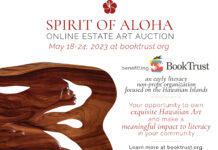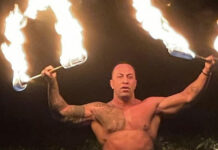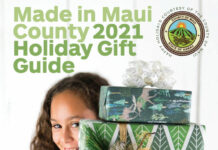Maui Plein Air Painters Invitational
February 17–25, 2018
Visit MauiPleinAirPainting.org for details.




Poetry by Lali Groth
The first plein air painters of Hawai‘i started out as naturalists,
hired hands on European Exhibition trips.
Photography having not been invented yet, these artists set out
to record the land and its topography, its curves and birds,
its plants and people, its culture, and colonial industry.
From John Webber, whose fame came from an engraving of the death
of Captain Cook, to Jules Tavernier, whose fascination with volcanoes
extended to the smoke-hazed valley of Pu‘unēnē in 1885,
where he set up easel, and painted the red-roofed sugar mill
below the slope of Haleakalā.
These painters are our historians—they seek to document a point in time,
a vantage that will fade from view.
The finery of sugar—red trucks, molasses, green fields of cane;
Macedo’s frame captures last haul and harvest.
A year later, Holmes elegizes the mill in ghostly quietude:
“When we passed the old mill on our way to the volcano,
I had already envisaged it with late light. All day
the image brewed.
Returning late afternoon, heading west on Hansen Road,
the light was falling fast—
so we pulled off to the side, Greg ventured
into the field a little deeper, Katie set up behind me.
I listened and the painting was dictated by light rays
falling across the mountains, the dark line of the range,
the milky slants of light—it was important to get this
right, so I painted them in first.
From there I was able to build the shapes, the silhouette of the mill
rising up from the ground, the mountains, washed in violet and blue;
with a rag and a few brushes, I flooded the sky with clouds.”





